Features of Vintage Hamilton Military Watches (Chronographs)
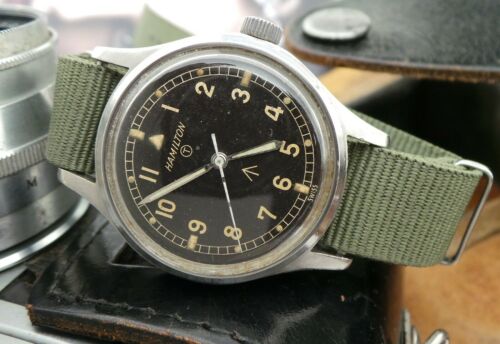
Hamilton is an American watch manufacturer founded in Pennsylvania in 1892.
It later became part of the Swatch Group and moved its headquarters to Switzerland.
Hamilton made watches for the British Ministry of Defence from the late 1960s to the late 1970s.
The British Ministry of Defence, faced with cuts to its defence budget, began looking for new contractors and Hamilton was chosen to do the work.
Then, in the late 1970s, the "quartz wave" swept through the watch industry, and Hamilton was forced to terminate its contract with the British Ministry of Defence.
Hamilton's military watches meet the British Ministry of Defense's requirements of "maintaining accuracy while keeping costs down" and are still loved by many enthusiasts.
Hamilton 6B Royal Air Force Military Watch
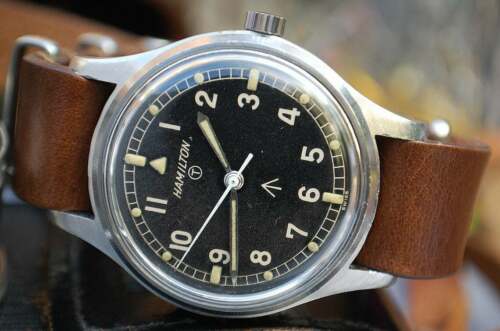
There are two types of watches in this category.
An early model without a hack function and a later model with a hack function.
The hack function is a function that allows you to pull the crown out of the time-setting position to stop the second hand and set the time to the time of another watch or the exact time.
It looks similar to the "Mark 11" manufactured by IWC and JLC, but can be found more cheaply than the "Mark 11", so collectors call it the "Poor Man's Mark 11" or "Hamilton's Mark 11".
6B-9101000 (no hack function)

This is an early model produced by Hamilton starting around 1965.
It was built to the British Ministry of Defence specifications DEF-3 or DEF-3-A.
Black dial with white indexes.
The numerals are Arabic numerals and are coated with tritium luminescent paint along with the sword-shaped hands.
The dial features the Hamilton name, a "round T" indicating the use of tritium, and the Broad Arrow, denoting the watch as belonging to the British Royal Family.
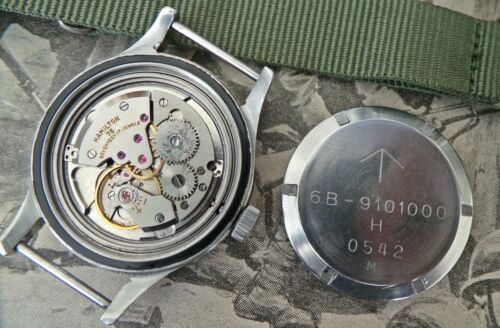
The movement is Hamilton's Caliber 75, a modified ETA2390.
The case back is engraved with Broad Arrow, 6B (Royal Air Force) indicating the supply unit, 9101000 indicating the supply item number, H mark and individual number.
Only about 3,200 were produced, making this a rare military watch.
6B-9614045 (hackable)

This is a later model that Hamilton produced from around 1967 onwards.
It was built to the British Ministry of Defence specification DEF-3-B.
The hack function has been added based on the specifications, and there are no major design differences from the 6B-910100.
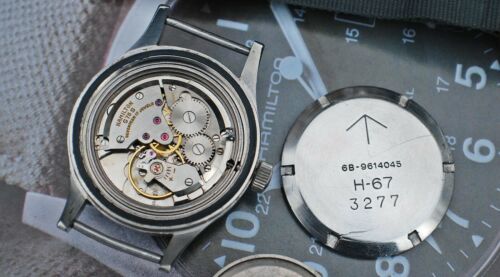
The movement is Hamilton's caliber S75S, a modified ETA 2390.
The case back is engraved with Broad Arrow, the unit it was issued with, 6B, the issue item number 9614045, the year of manufacture, and the individual number.
Only about 1,000 were produced, making this an extremely valuable military watch.
Hamilton Military Chronograph
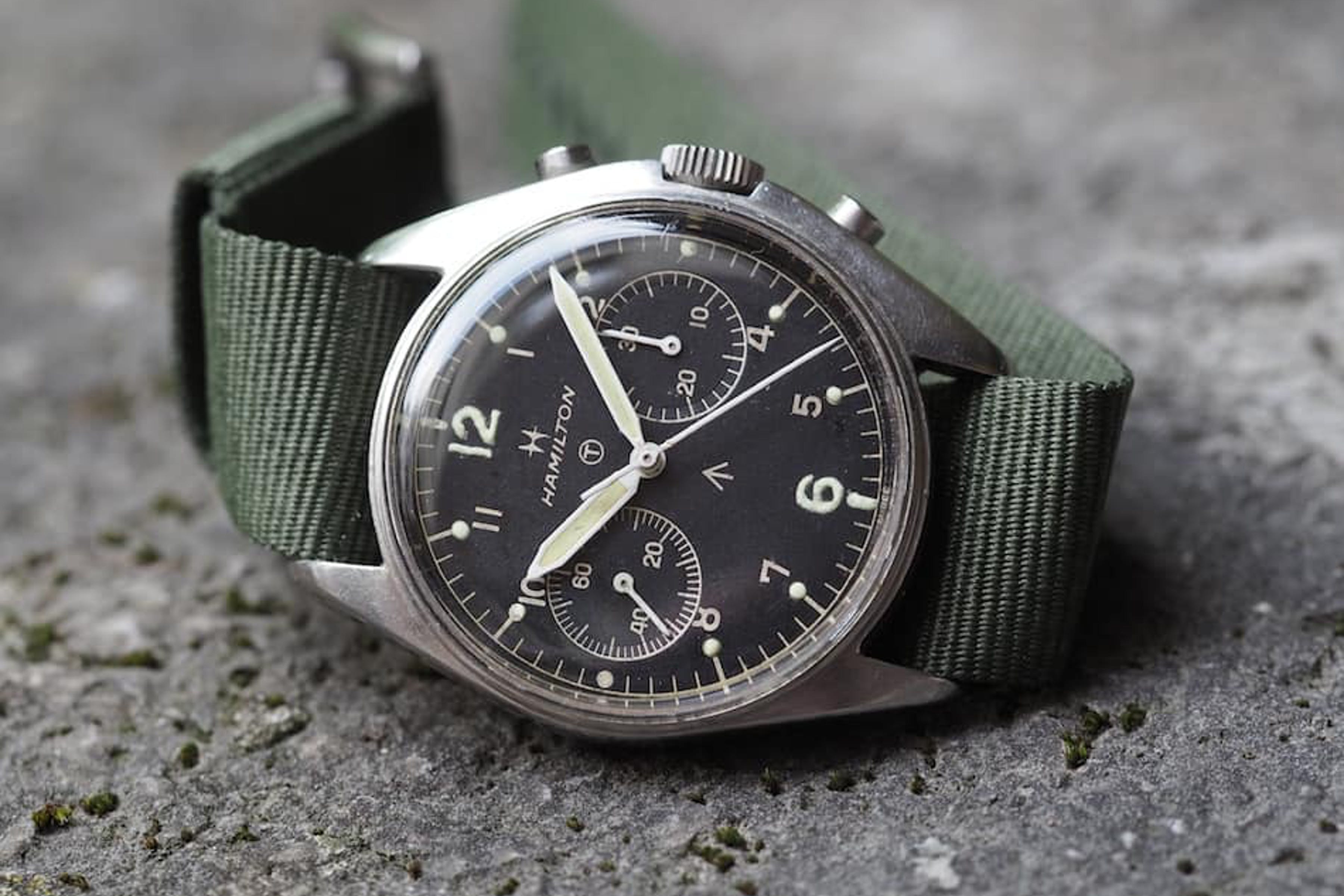
The Hamilton Military Chronograph covers both the "military" and "chronograph" categories.
This is a vintage watch that is still highly sought after and hard to come by.
In the early 1970s, the British Ministry of Defence was forced to cut defense spending due to the changing times, and this included looking to reduce the cost of pilot's chronographs.
The result was this military chronograph, featuring a generic movement to keep costs down.
This pilot's chronograph was produced from 1970 through the early 1980s by four companies: Hamilton, CWC, Precista, and Newmark.
Hamilton was the first to begin production in 1970, followed by CWC in 1973, Newmark in 1980, and Precista in 1981.
Hamilton Military Chronograph Design

The most distinctive feature of the Hamilton Military Chronograph is its asymmetrical case.
It is no exaggeration to say that this is the most noteworthy feature of this watch.
The case is asymmetrical, with the right side larger than the left, to protect the crown and pushers.
If the crown and pushers protrude from the case, there is a risk that a pilot may accidentally activate the crown or pushers if they accidentally hit the watch.
To eliminate this risk, the right side of the case was "intentionally" made wider, reducing the protrusion of the crown and pushers.

Another feature is the welded spring bars.
To prevent the spring bars from coming loose and causing you to lose your watch, the spring bars are welded to the case.
This is a feature commonly seen on military watches.
Looking at the case from the side, you can see that the welds have been polished to give the surface a smooth finish.
The spring bars cannot be removed, which limits the types of straps that can be attached.

Another feature is the ease of reading the dial.
Black dial with white Arabic numerals.
The numerals 12 and 6, the round hour markers, and the bold, bold hour and minute hands are filled with tritium, a luminescent material.
Beneath the number 12 is the Hamilton logo and name, as well as a discreet "round T" denoting the use of tritium, and below that is the "Broad Arrow" denoting that the watch is owned by the British Royal Family.
It features a simple, compact and functional design, with a small second hand at 9 o'clock, a 30-minute counter at 3 o'clock, a case size of 38.5mm and a lug width of 20mm.
Hamilton Military Chronograph Movement
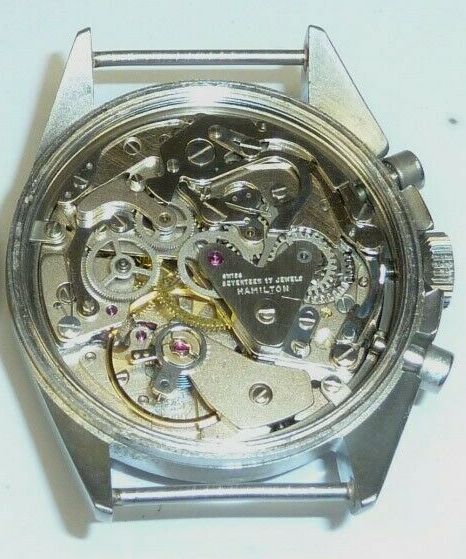
The Hamilton Military Chronograph is powered by the Valjoux 7733 movement.
This is a general-purpose hand-wound movement developed by the Swiss company Valjoux, and in the 1970s it was used in a variety of chronographs by various watch manufacturers.
It has a vibration rate of 18,000 vibrations per hour, is highly durable, and has no unnecessary mechanisms, making it an ideal movement for a simple chronograph.
It has two pushers, two registers and a 30-minute counter.
By pulling the crown out one notch and turning it, the mainspring can be wound, by pressing the upper pusher the chronograph can be started and stopped, and by pressing the lower pusher the chronograph can be reset.
It's very easy to pull out the crown.
In comparison, the pusher may look easy to press at first glance, but it is surprisingly stiff and it may take some time to get used to pressing it.
It is likely that it would have been very difficult for a pilot to push this pusher while wearing gloves.
What the case back engravings mean
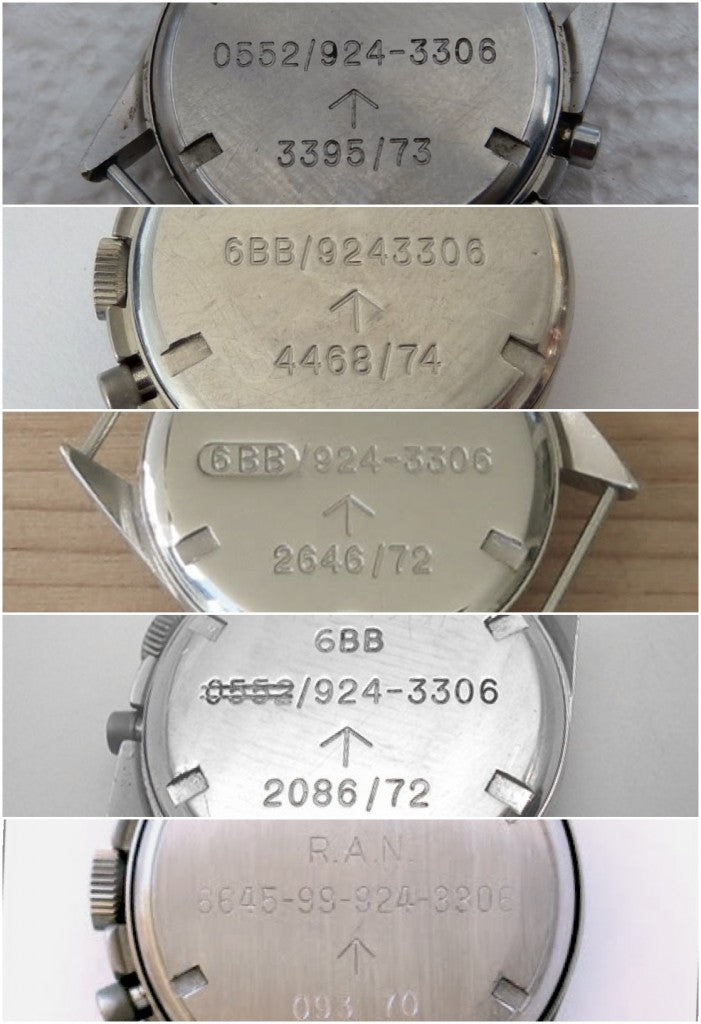
The Hamilton Military Chronograph is unmistakably military.
Therefore, it needed to be managed and tracked in a reliable way.
To make this task easier, the case back of this military chronograph is engraved with four important numbers/letters.
it is,
・Supplied item number
・Supply Unit
Year of payment
・Individual number
There were four of them.
Looking at the case back, you will see the issuing unit/issue number engraved at the top and "Broad Arrow" engraved below, symbolizing that it is "property of the British Crown".
Below that are engraved the individual number and the last two digits of the year of issue.
Each watch has a unique number.
The supply item number "924-3306" indicates that they were manufactured according to the same standards, and this supply item number was engraved on all four companies.
The supply units were as follows: two in the UK and one in Australia.
0552: Royal Navy
・6BB: Royal Air Force
6645-99: Royal Australian Navy
Because these military chronographs were military property, they were sometimes reused, retrieved from one unit and then reissued to another.
Examples are the third and fourth engravings in the photo.
These two watches were originally issued to the Royal Navy and then reissued to the Royal Air Force.
In the third example, the RAF designation "6BB" is stamped directly above the Royal Navy designation "0552", obscuring it completely.
The fourth example has "0552" crossed out with two lines and the inscription "6BB" engraved above it.

These military chronographs were manufactured to the same standards by the four companies mentioned above - Hamilton, CWC, Precistar, and Newmark - for over 10 years, so the parts were interchangeable.
As a result, there are military chronographs that are made from a combination of parts from multiple companies.
A good example would be a watch with a Hamilton-signed dial, a CWC-signed movement, and a much later issue year engraved caseback.
Combining parts from different companies in this way does not mean it is a "fake product."
The Ministry of Defence's watchmakers often exchanged parts between companies, and it was common for companies with stock to supply parts to other companies.
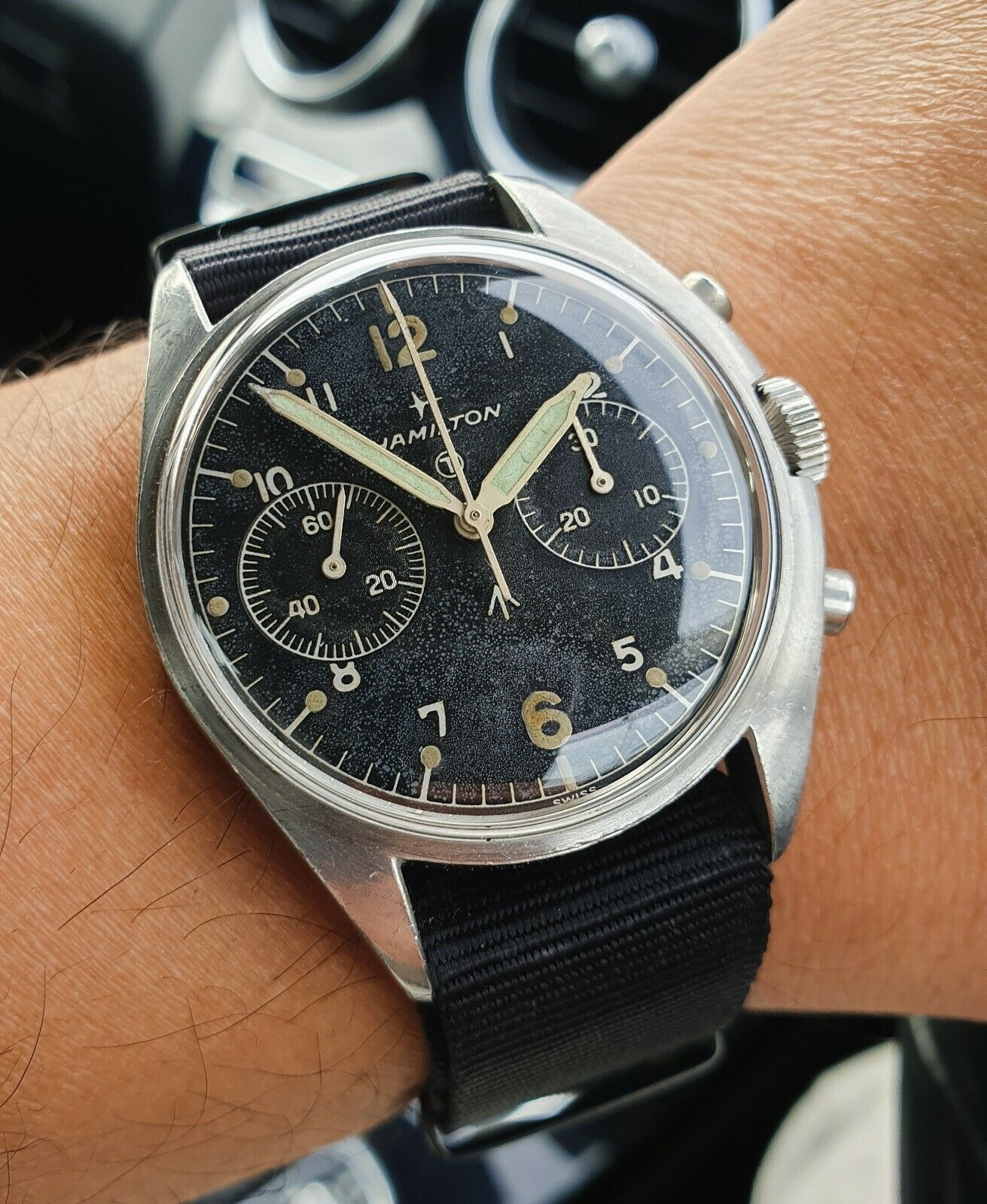
The Hamilton Military Chronograph is a practical watch with a great history.
It is also a genuine tool watch that has served with Commonwealth soldiers in conflicts all over the world.
Yet, the greatest appeal of the Hamilton Military Chronograph is its ease of use, which makes it suitable for everyday use.













